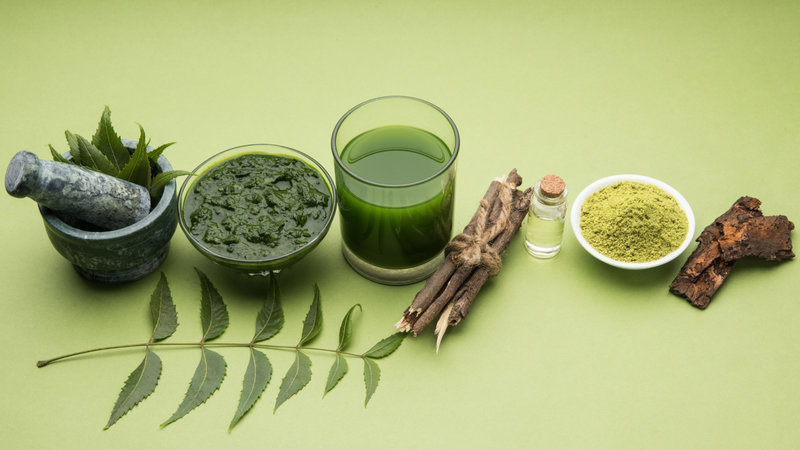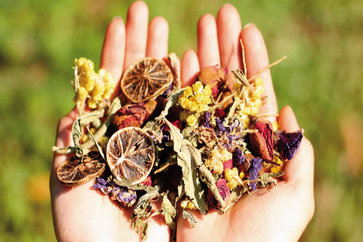Neem Tree – The Amazing Plant Uses For Today & Future Health
The Neem tree (Nim) in English(Azadirachta indica) is known in India where it originated as “The pharmacy of the people” because it improves the conditions of diseases and disorders from bad teeth and sores to ulcers and malaria.
The Neem’s range of uses to treat human disease, revitalize the immune system, and strengthen health is almost inexhaustible. Neem is arguably one of the most powerful blood purifiers and detoxifiers. Hundreds of diseases improve favorably with proper applications of Neem.
The bark, seeds, leaves, fruits, and oil of the Neem tree contain substances responsible for the excellent benefits of this exceptional plant. Among the therapeutic qualities, we can highlight
- Antiviral
- Antipyretic
- Antianxiety
- Antimicrobial
- Antiinflammatory
- Antielmitic
- Antifungal
- Antitumor
- Immune System Stimulant
- Antibacterial
- Analgesic
Neem’s most important property is that it revitalizes the immune system at all levels and helps the body fight infection before the immune system is even required.
Neem tree uses
The Amazing Plant” for today and the future, Today’s modern societies are trying to turn their eyes towards nature in search of remedies. In this context, Neem has returned after five thousand years and promises to be the focus of organic relief without harmful side effects, being the alternative to help cure many diseases.
1. Diabetes
Treatments with neem extracts ensure that insulin-dependent people can decrease the insulin dose and in some cases, that the pancreas normalizes and can do without it. In non-insulin-dependent diabetics, spectacular results are being obtained, because although the control of the feeding is still important, with the treatment of the neem in drops and leaf capsules, the diabetes is disappearing or is controlled by natural means in the majority of the cases.
2. Cancer
The polysaccharides contained in the Neem extract are very effective in reducing and dissolving tumors.
3. Cardiovascular Diseases
Neem prevents the risk of heart attacks. It prevents blood clotting (thrombus formation), lowers cholesterol, regulates heartbeats, and also regulates blood pressure. An active compound from the extract of neem leaves, it is a vasodilator, so it helps reduce blood pressure.
Neem tree in Indian culture uses
- Traditionally in India, Neem has been used to combat severe cases of virus diseases, and even practicing doctors use it in diseases such as chickenpox and measles, extracts of Neem on the skin to prevent the infection from spreading to healthy cells.
- Although Neem does not cure these diseases, it is very effective as prevention. Recent studies have shown that Neem is effective against herpes virus DNA polymerase and virus hepatitis B.
- The Neem has been widely used as an antipyretic (fever reducer) due to its properties, Neem derivatives are used as analgesics (pain reducer) and anti-inflammatory effects.
- Modern societies are trying to turn their eyes to nature in search of remedies. In this context, Neem has returned after 5000 years and promises to be the center of care for organic relief without harmful side effects, being the alternative to help cure many diseases.
Neem medicinal properties
Why Neem is so beneficial? It is due to the neem contains (nim) bromatological properties. It is the main active compounds, or the combination of these assets in medicinal plants, that give us the health benefit is not an easy task.
Since the physical-chemical analysis of the components is systematic and guides us on the composition and structure of each of its molecules separately without evaluating the interactions between those molecules contained in the plant that show us the beneficial effect of health.
Determining what kind of molecules and their combination give us such a beneficial effect is a complex, time-consuming, and often frustrating process, only for multi-disciplinary scientific research.
The Neem(nim) contains many unique compounds already identified and others that have not yet been identified. The most common compounds analyzed are:
- Nimbin: anti-inflammatory, antipyretic, antihistamine, antiarthritic, antiviral, and antifungal.
- Nimbidin: antibacterial, antiulcer, antiarrhythmic, antifungal, antiviral.
- Nimbidol: antitubercular, antiprotozoa, antipyretic, antifungal.
- Genunin: dilating vessel, antimalarial, antifungal, a stimulator of immunity.
- Sodium nimbinate: diuretic, spermicide, antiarthritic.
- Quercetin: antiprotozoal, antibacterial, antiarthritic.
- Salaninn: insect repellent.
- Azadirachtin: insect repellent. Anti-hormonal food.
i) Neem leaves (Nim)
- It contains 20% fiber, 50% carbohydrates, 5% proteins with essential amino acids such as alanine, asparagine, aspartic acid, cystine, glutamic acid, isoleucine phenylalanine, proline threonine, tryptophan, taurine, and valine.
ii) Neem bark content (Nim)
- The bark contains: protein 3.4%, alkaloids 0.68% and minerals 4.6%, of the essential amino acids it contains are: Arginine, aspargine, aspartic acid, cystine, phenylalanine, proline, threonine, tryptophan.
- The active compounds reported in the cortex are Nimbin, Nimbidin, Nimbasterol, Margosin, and Nimbin.
- It contains polisacaridos that possess the quality of being antitumor and increase the formation of interferon, as well as reduce inflammation.
- The bark also contains gallic acid, gallocatechin epicatechin, catechin, and epigallocatechin.
iii) Neem oil content (Fruit)
- Neem seed is very rich in fatty acid, constituting 40% of its weight, the fatty components are called terpenoids, identifying the presence of more than 100 types.
- The most important limonoids (Triterpenes) are nine groups and are commonly used for their bactericidal and anti-food fungal activity for insect control, where the most important are: azadirachtin, meliantriol, nimbinene, and salannin.
How the neem (Nim) works
- Neem is a powerful blood purifier and detoxifier reduces fever and toxins that act in most skin diseases, its astringent action promotes healing.
- Neem stimulates the immune system to help us fight infections, however, it will not cause overstimulation thus avoiding allergic activity or inflammation.
- In fact, it helps regulate the immune system to avoid responses such as allergies in inflammations.
- Neem’s anti-inflammatory effect is the foundation for its ability to reduce the severity of ulcers and protect the layers that line our stomach.
- The Neem can protect against cancer, increases the activity of the antioxidant enzyme glutathione-s-transferase in the liver being one enzyme that detoxifies carcinogens.
- By boosting the immune system, the production of interferon is also boosted, increasing the ability of macrophages to swallow foreign bodies and improving the response of lymphocytes to challenges such as tetanus toxin.
- Neem extracts also stimulate the production of lymphokine, a powerful activator of the immune system.



























In India Neem is considered the main goal is to promote good health, not fight disease. But treatments may be geared toward specific health problems.
Great Blog!! That was amazing. Your thought processing is wonderful. The way you tell the thing is awesome.